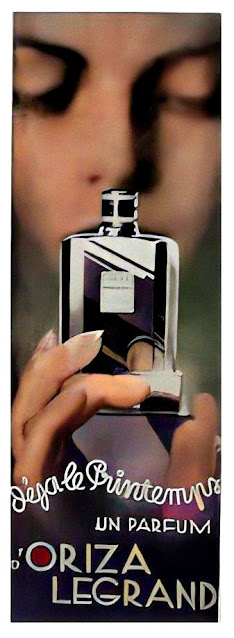The perfume "Deja le Printemps" by Oriza L. Legrand, launched in 1922, carries a name that resonates deeply with the essence of springtime in Paris during that era.
During the 1920s in Paris, there was a cultural renaissance known as the "Années folles" or "Roaring Twenties," characterized by artistic innovation, social liberation, and a flourishing of literature, music, and fashion. This period saw a shift towards more daring and modern expressions in art and fashion, paralleled by the emergence of new fragrances that captured the spirit of the time.
The name of the perfume evokes a sense of anticipation and joy associated with the arrival of spring. It suggests that wearing this fragrance transports one to a state where spring is not just a season but a state of being—refreshing, invigorating, and full of promise. The scent likely combines floral notes that were popular during that era, possibly incorporating elements like jasmine, rose, or iris, which were beloved by perfumers of the time.
Furthermore, the choice of "Deja le Printemps" as a name for a perfume launched in 1922 also aligns with the broader cultural context of the interwar period in Paris. It reflects a longing for beauty, optimism, and a celebration of life after the turmoil of World War I. The perfume's name encapsulates the sentiment that despite challenges, the spirit of spring—of renewal and hope—can always be embraced and cherished.
In summary, "Deja le Printemps" as a perfume name launched in 1922 in Paris not only captures the olfactory essence of springtime but also resonates with the cultural milieu of the time, symbolizing a return to joy, beauty, and a newfound sense of freedom and creativity.





